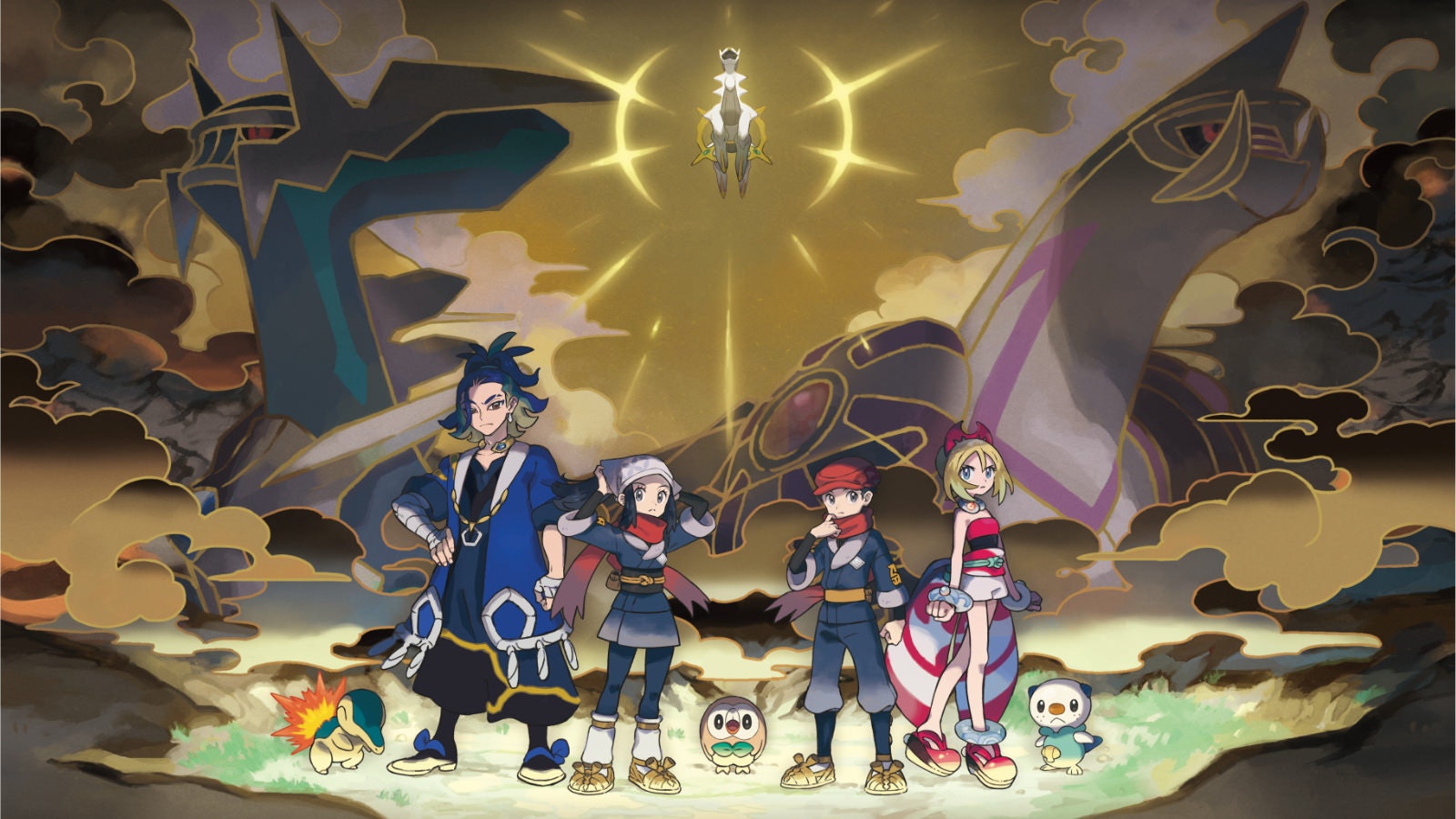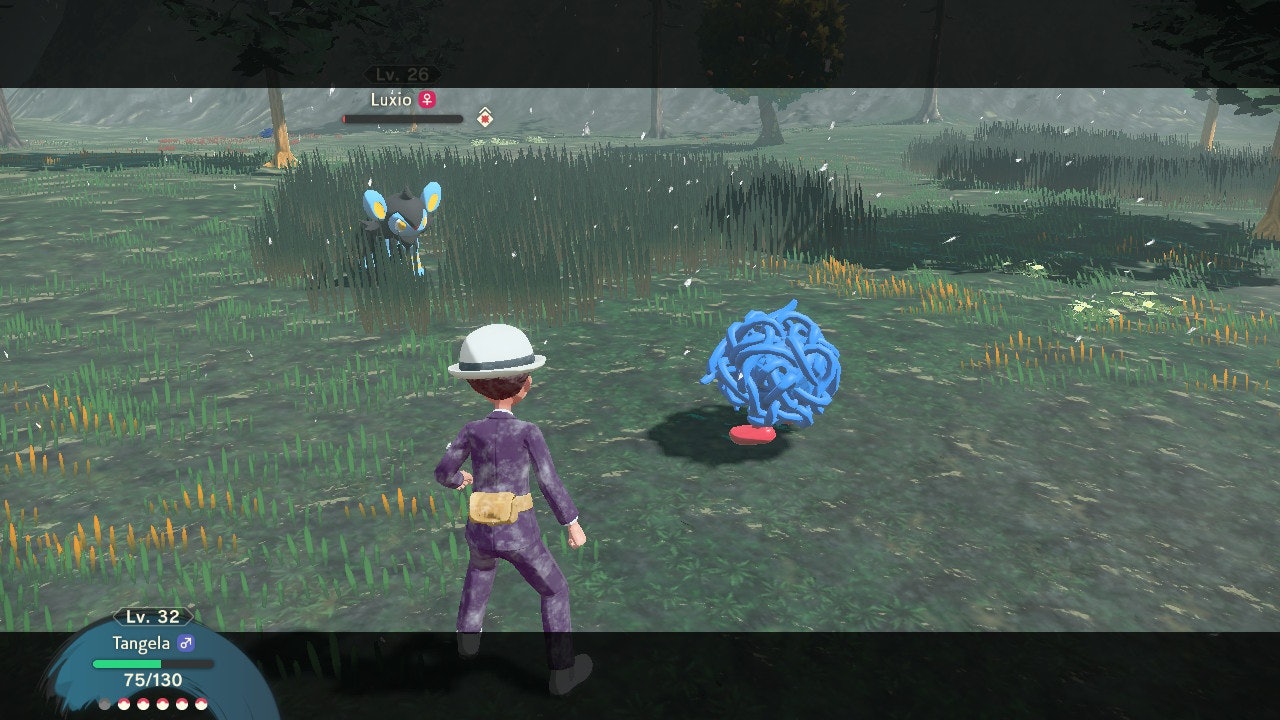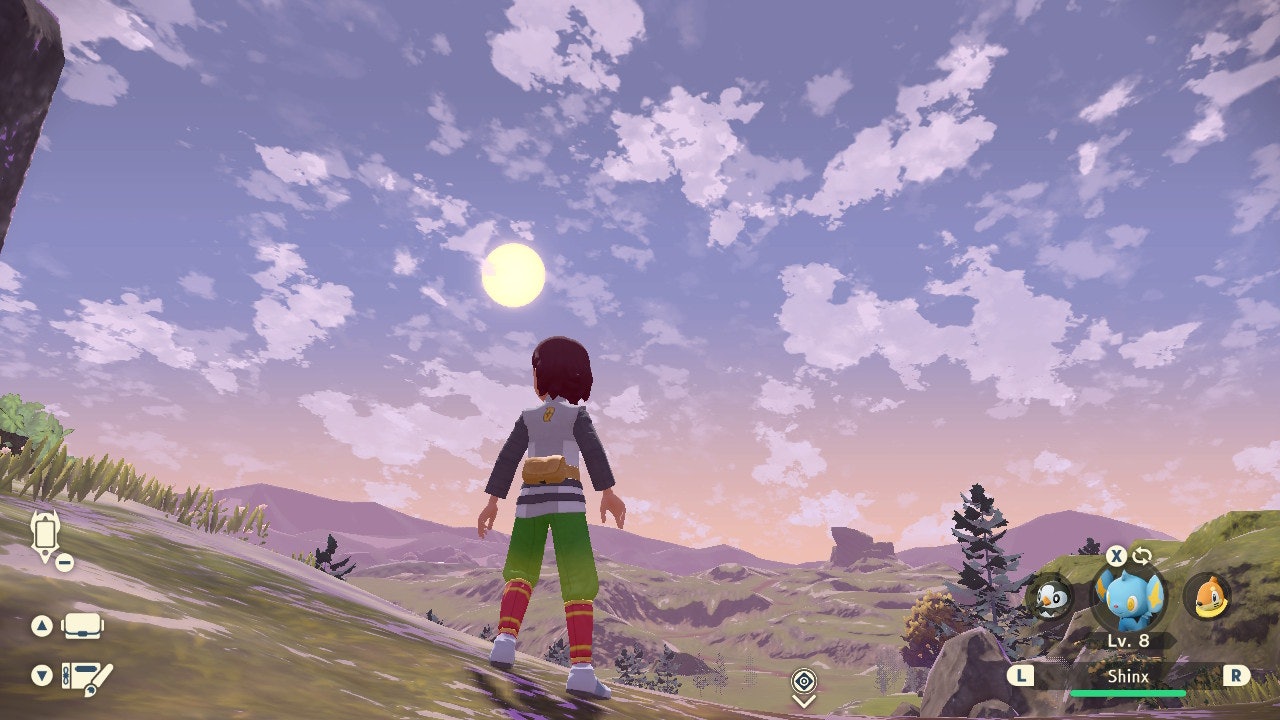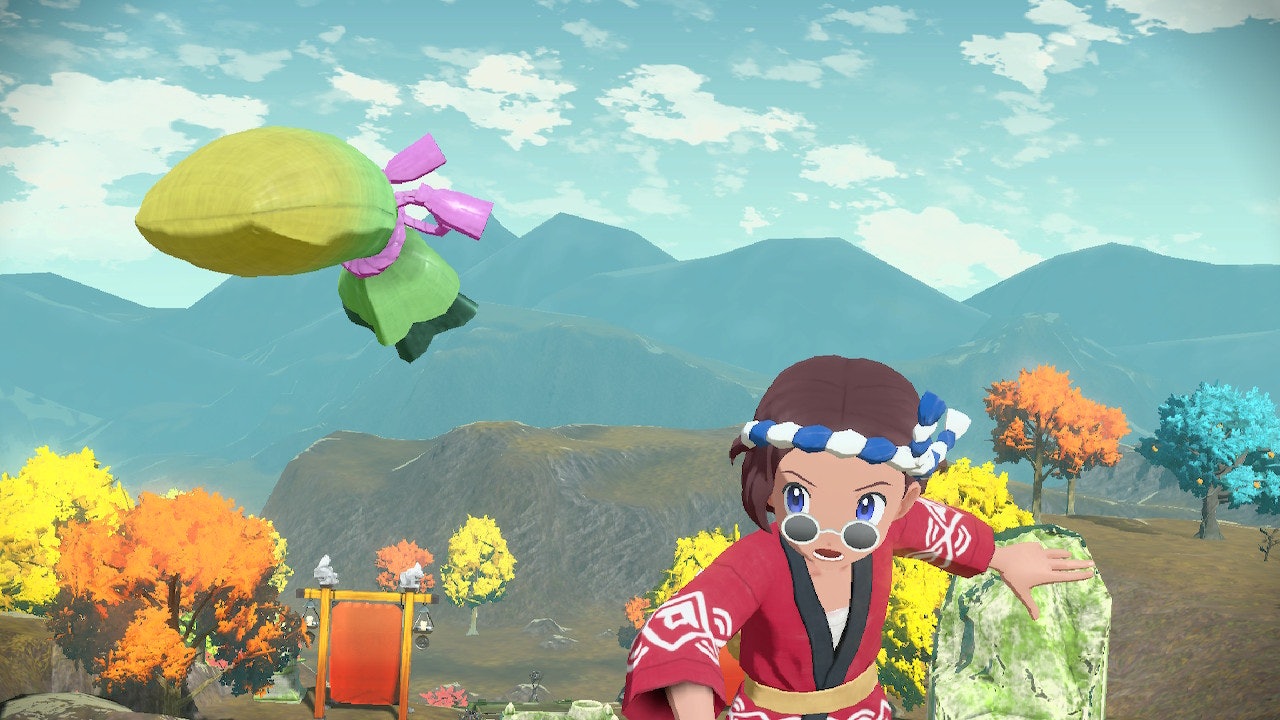
Throwing my first Poké Ball felt like magic.
In the Hisui Region of Pokémon Legends: Arceus, you catch Pokémon by aiming a reticle and tossing a Poké Ball with a click of the right trigger. It’s the kind of intuitive gameplay mechanic that fans of the franchise have desperately wanted to see for years, and I was ecstatic to find that capturing a Pokémon in this way felt as refreshing as I’ve always hoped.
The magic of Legends: Arceus stems from dozens of smaller quality-of-life improvements. Some are long-requested, others are simply revelatory — mechanics I’d never even considered in all my fantasies of the ideal Pokémon game. Whether it be Pokémon displaying unique character traits, cohesion between the different mechanical systems, or the crafting of items, developer Game Freak has the right ideas in place for the future of the series.
Legends: Arceus is a stepping stone, but not the final destination. It’s not quite this franchise’s Breath of the Wild moment. Still, it’s the best entry in the franchise in a decade.

Pokémon Evolution
Set hundreds of years ago in the Hisui region (known in the modern-era games as Sinnoh), you play as an extraordinarily adept Pokémon trainer. For the era, it’s an incredibly rare skill to have. Humans, for the most part, fear Pokémon. As a member of the Survey Corps, you must discover all there is to know about the creatures. You can also take on numerous requests from the citizens of Jubilife Village, the hub of human life in all of Hisui.
While in previous games, the different systems operated distinctly from one another, Legends: Arceus deftly weaves it all together. Leveling up your Pokémon and filling out your Pokédex are intertwined, helping you climb the ranks within the Survey Corps, which in turn provides new resources and tools to assist in progression. It’s a marriage of mechanics that felt disjointed and stunted in previous titles, incentivizing you to play more.

The region consists of several large but separate environments. In a first for the series, players can implement stealth tactics to increase their chances of catching. Since capturing as many Pokémon as possible significantly improves your Pokédex, it’s wise to ABC: Always Be Catching. Helpfully, this new mechanic allows you to throw multiple Poké Balls in quick succession.
If a Pokémon does notice you, it might skittishly run away or attack. That’s where dodging comes in handy. A battle isn’t initiated until you toss one of your already captured ‘mons at the aggressor, which depending on how many are attacking you at once, might result in a 1v2 or even 1v3 battle.
Thankfully, battles have gotten a much-needed upgrade. A strong move raises attack power but gives the enemy a chance to use two moves in a row. Agile moves do the opposite, weakening the attack but offering the chance to attack again quickly. Combined with a slight increase in overall difficulty, these variations provide a new layer of strategy. Instead of capturing and battling being siloed events, both exist as a part of exploring the world, bringing an organic feeling the franchise has been sorely missing for a long time.

Another mainstay of other RPGs comes to Legends: Arceus in the form of crafting. Being able to rapidly alter your inventory feels right at home in the Pokémon world. But this is also where some of the flaws in the game manifest. You cannot store enough items at any one time, and increasing your satchel space becomes prohibitively expensive. While this pushes you to craft often, I still found myself having to drop items or fast travel to put stuff in permanent storage.
Other games manage to make crafting and inventory management a far less aggravating affair, yet after 25 years, Pokémon has yet to figure it out.
New Game, Old Graphics
The visuals of Pokémon Legends: Arceus look just as bad as they do in the trailers. Environments are muddy, with textures that pop in mere feet away from the character. Pokémon in the distance (a term I’m using loosely) only animate at a handful of frames per second, and these low-quality details are far too noticeable far too often.

While it’s easy to point toward the Nintendo Switch’s outdated hardware as the cause of these issues, 2019’s Pokémon Sword and Shield is a better-looking title. I’d even hazard to say that Breath of the Wild, which launched with the Switch in 2017, has superior graphics. It doesn’t help that there’s only one center of vibrancy in the game, Jubilife Village, to bring some personality to the world. The rest of the biomes are too repetitive and empty. The charm of the Galar region and its towns in Sword and Shield is wholly absent in Legends: Arceus.
The Pokémon themselves are a notable exception, and many of them finally live up to the descriptions in their Pokédex entries. If you spot a Sudowoodo, it freezes in place pretending to be a tree. The infamously fickle Glameow can frequently be spotted napping, making them easier to catch. These details, along with small touches like snow accumulating on the character’s clothing, add a little allure to the world. Still, it’s something we’d like to see Game Freak build upon in subsequent entries.
A Tale as Old as Time
While you’re probably not playing Pokémon Legends: Arceus for its story, I am happy to report that it’s one of the better ones. The game is satisfyingly meta in its exploration of the first interactions between humans and Pokémon, utilizing the player’s franchise knowledge to great effect.
Both in-game lore and external elements of the series — such as the fact that most Pokémon games are split into two releases — are integrated into the game’s story in satisfying ways. Simply seeing the people of Hisui intensely fearful of Pokémon, knowing how well the world eventually adapts to their existence, provides a refreshing spin on the well-trod territory.
Legends: Arceus also benefits from leaning into the absurd dialogue and situations that define a Pokémon story. The writers seem acutely aware of how preposterous elements of the series are and don’t shy away from it. (There’s one particular moment I’m convinced is a reference to the Breaking Bad “Jesse, what are you talking about?” meme.)

Pokémon Legends: Arceus may only dabble in mechanics and formulas nearly every other role-playing game has mastered, but Game Freak succeeds here far more than it stumbles. Combined with a unique ingredient — the most successful franchise of all time, beloved by hundreds of millions — the developer proves Pokémon works as a modern RPG and that future installments could potentially outmatch other games in the genre.
Is Pokémon Legends: Arceus the perfect package we’ve been dreaming of? No. But it comes much closer to it than I was expecting, and boldly declares that we might not be too far off from that 10/10 experience.
8/10
Inverse played Pokémon Legends: Arceus on the Nintendo Switch OLED Model before the January 28, 2022 release date.
INVERSE VIDEO GAME REVIEW ETHOS: When it comes to video games, Inverse values a few qualities that other sites may not. For instance, we care about hours over money. Many new AAA games have similar costs, which is why we value the experience of playing more than price comparisons. We don’t value grinding and fetch quests as much as games that make the most out of every level. We also care about the in-game narrative more than most. If the world of a video game is rich enough to foster sociological theories about its government and character backstories, it’s a game we won’t be able to stop thinking about, no matter its price or popularity. We won’t punch down. We won’t evaluate an indie game in the same way we will evaluate a AAA game that’s produced by a team of thousands. We review games based on what’s available in our consoles at the time. And finally, we have very little tolerance for junk science. (Magic is always OK.)







